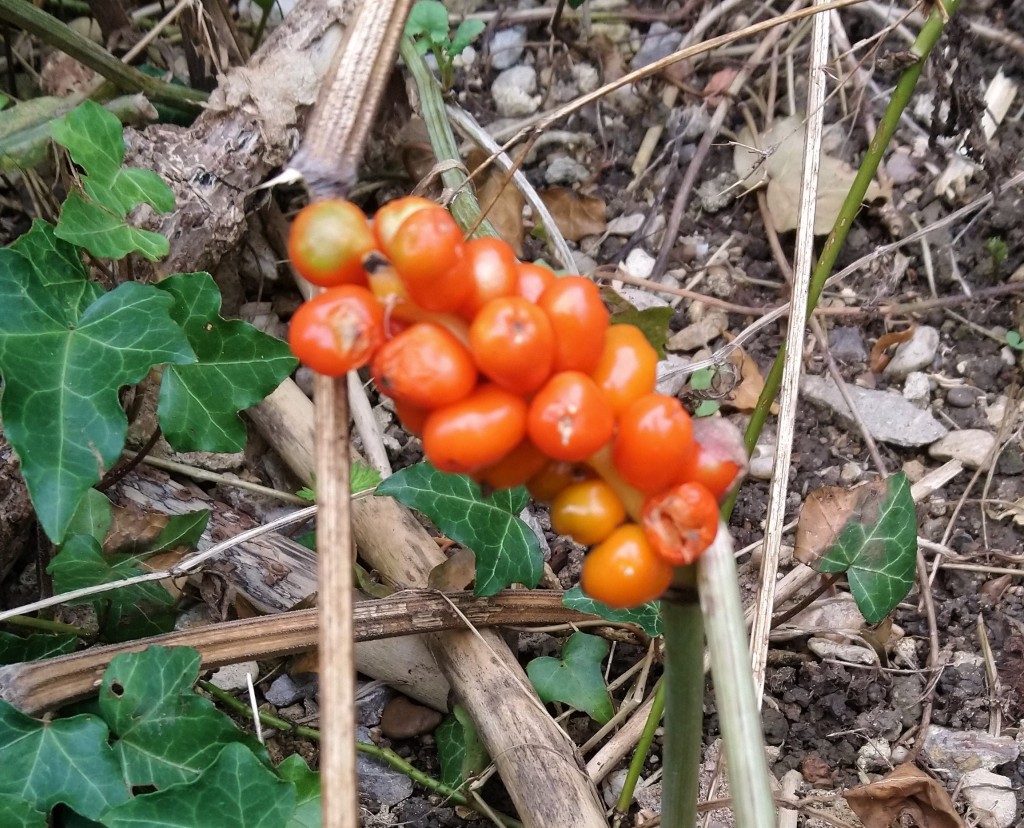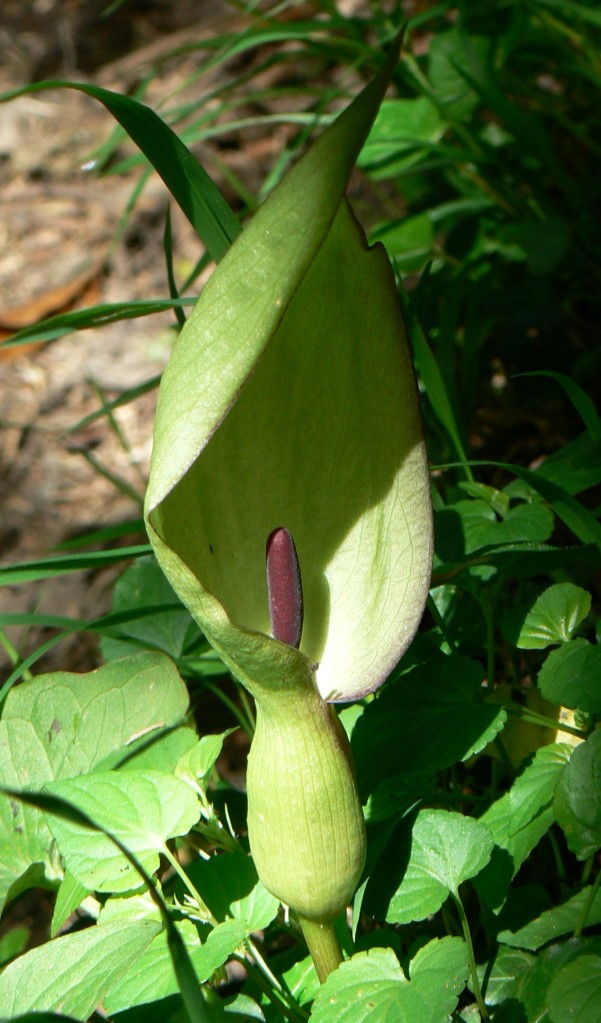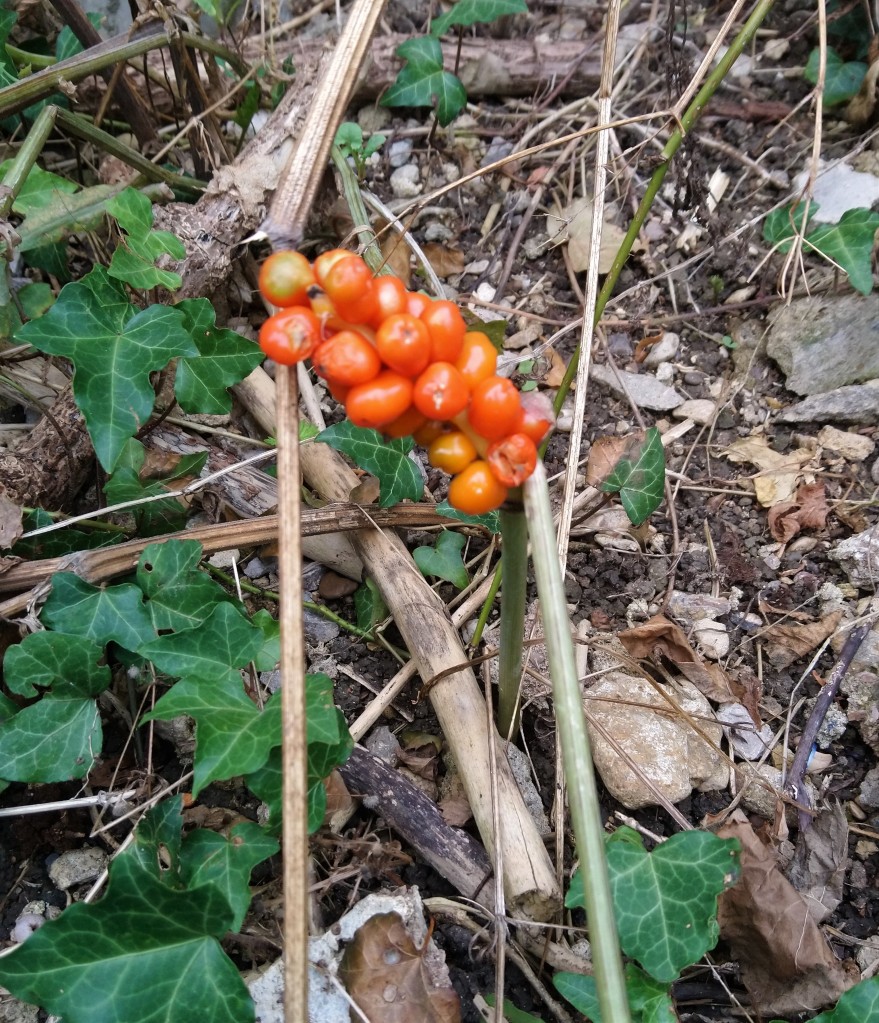
[042] Arum maculatum, Cuckoo Pint
Introduction
Arum maculatum, a plant with many names, is a small plant looking somewhat like a lily, notable for its very poisonous red or orange berries.
It is supposedly called Cuckoo Pint. I know it as Lords and Ladies. Wikipedia also give the names: snakeshead, adder’s root, arum, wild arum, arum lily, devils and angels, cows and bulls, soldiers diddies, priest’s pintle, Adam and Eve, bobbins, naked girls, naked boys, starch-root, wake robin, friar’s cowl, jack in the pulpit and cheese and toast.
Taxonomy
Kingdom – Plants
Division – Vascular Plants
Class – Angiosperms (Flowering Plants)
Clade – Monocots
Order – Alismatales
Family – Araceae (Arum family)
Genus – Arum
Scientific Name – Arum maculatum
Name
All the common names relate to its symbolic appearance in relation to sex. The ‘pint’ of Cuckoo Pint is a euphemistic shortening of pintle, an obsolete form of ‘penis.’
Arum is the Latin name for the plant. See below for ‘maculatum.’
There is a plant called a Lily. Wikipedia lists over a hundred other unrelated genera called lilies because of their appearance!
Description
The family Araceae has about 4 000 species, mostly tropical, and all have the same type of inflorescences, as described below.
The leaves of Cuckoo Pint are either purple spotted (maculatum) or unspotted (immaculatum.) It is a woodland species and only the flower structure is noticeable.
It has a poker-shaped inflorescence called a spadix, partially enclosed in a green leaf-like hood called a spathe. Both male and female flowers are unseen, surrounding the base of the spadix inside the spathe. A ring of hairs trap insects, which carry pollen to other flowers.

The female flowers turn to red or orange berries, which are visible when the spathe and other leaves wither away.

Habitat and use
Cuckoo Pint is common and widespread in Britain and across Europe, Turkey and the Caucasus.
Its roots can be cooked and eaten but this must be done carefully as they are highly toxic.
Other Notes
Cuckoo Pint is available for cultivation as an ornamental plant. It can self-seed and become invasive.
All parts of the plant are poisonous. It is one of the most common causes of accidental plant poisoning.
See also
Nothing else found in Britain looks similar.
